Niklas Heidloff
Application Modernization and Rabbits
#1about 5 minutes
Using a rabbit analogy to explain application modernization
A simple analogy with rabbits illustrates the core benefits of modernizing monolithic applications, such as increased agility, better user experiences, and reduced costs.
#2about 3 minutes
Understanding the benefits and strategies for modernization
Microservices improve application resiliency, and key strategies for dealing with legacy code include retiring, rehosting (lift and shift), containerizing, or refactoring.
#3about 3 minutes
Comparing the legacy and modernized e-commerce applications
A demonstration shows the original 10-year-old Dojo-based e-commerce application and its modernized, container-based counterpart with a new UI.
#4about 3 minutes
Outlining the incremental eight-step modernization process
The modernization journey is broken down into eight incremental steps, starting from containerizing a Java EE monolith to implementing micro frontends.
#5about 5 minutes
Using tools to containerize a legacy Java application
The IBM Cloud Transformation Advisor and WebSphere Application Migration Toolkit are used to analyze legacy code and automate the process of moving it into a container.
#6about 5 minutes
Separating the frontend and migrating to open source
The application is refactored by separating the frontend and backend with REST APIs using a BFF pattern, then migrating the runtime from WebSphere to Open Liberty.
#7about 9 minutes
Using the strangler pattern to extract a microservice
The Strangler Fig pattern is applied to incrementally replace parts of the monolith, using the Mono2Micro tool to identify the catalog as the first microservice to extract.
#8about 6 minutes
Using event-driven architecture to decouple microservices
To avoid creating a distributed monolith with tight coupling, an event-driven approach with Apache Kafka is used for asynchronous communication between services.
#9about 5 minutes
Improving performance with modern runtimes and reactive code
Modern Java runtimes like Quarkus, combined with efficient JVMs like OpenJ9 and reactive programming patterns, can significantly improve application performance and efficiency.
#10about 7 minutes
Decomposing the UI monolith into micro frontends
The monolithic frontend is broken down into independent micro frontends using frameworks like Vue.js and single-spa, with RxJS for event-based communication.
#11about 15 minutes
Accessing the open source project and future plans
The complete sample application is available on GitHub with scripts for easy setup, and future work includes adding CI/CD pipelines for Kubernetes and OpenShift.
Related jobs
Jobs that call for the skills explored in this talk.
Featured Partners
Related Videos
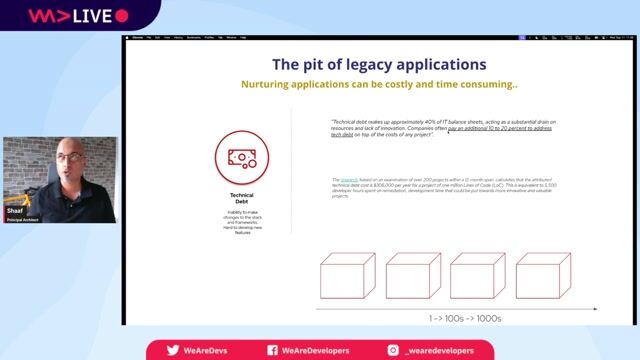 41:17
41:17Application Modernization Leveraging Gen-AI for Automated Code Transformation
Syed M Shaaf
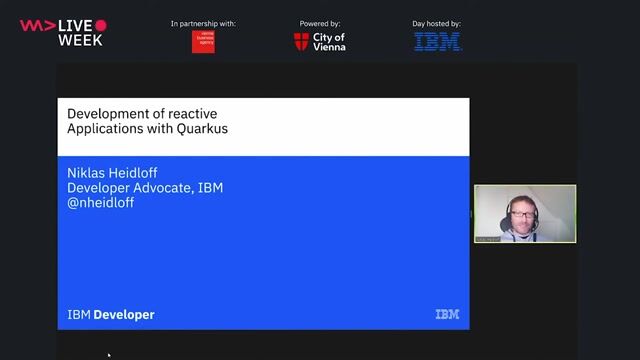 39:10
39:10Development of reactive applications with Quarkus
Niklas Heidloff
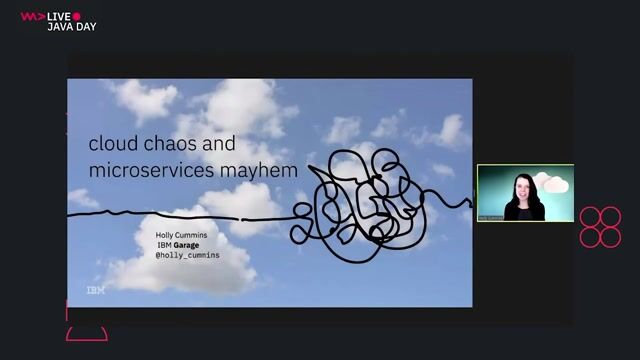 39:16
39:16Cloud Chaos and Microservices Mayhem
Holly Cummins
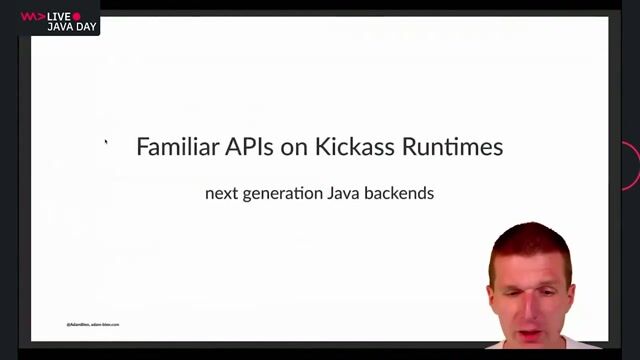 37:55
37:552021: Familiar APIs on Kickass Runtimes #slideless
Adam Bien
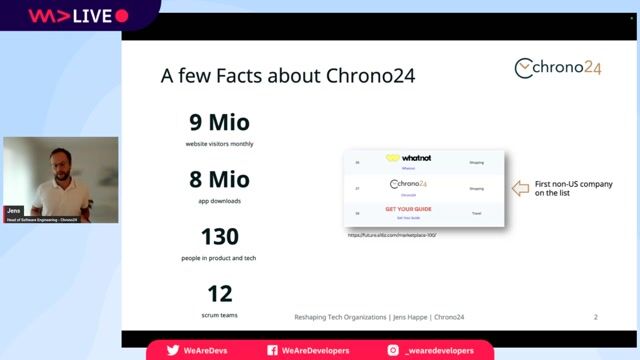 50:06
50:06Single Server, Global Reach: Running a Worldwide Marketplace on Bare Metal in a Cloud-Dominated World
Jens Happe
 1:01:30
1:01:30Domain-Driven Transformation—How to Bring (Back) Sustainable Architecture to Legacy and Monoliths
Henning Schwentner
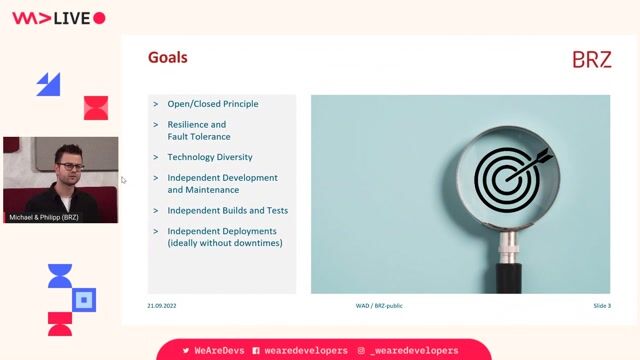 58:05
58:05Our journey with Spring Boot in a microservice architecture
Michael Eder & Philipp Frauenthaler
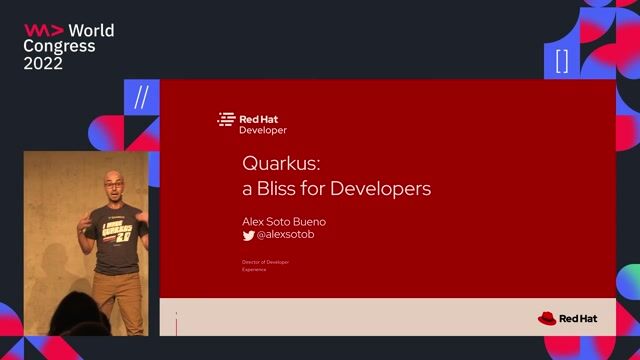 44:40
44:40Quarkus. A Bliss for developers
Alex Soto
From learning to earning
Jobs that call for the skills explored in this talk.








Senior Systems/DevOps Developer (f/m/d)
Bonial International GmbH
Berlin, Germany
Senior
Python
Terraform
Kubernetes
Elasticsearch
Amazon Web Services (AWS)


Softwareentwickler Java, Python oder Ruby (w|m|d)
zeb consulting
Frankfurt am Main, Germany
Junior
Intermediate
HTML
React
JavaScript
Java/Middleware Core Developer (JBoss EAP WS/REST)
IBM
Newcastle upon Tyne, United Kingdom
€54K
API
Java
REST
Senior Full-Stack Engineer (Java Quarkus/Angular, Kafka, Microservices)
Callista Group
Basel, Switzerland
Senior
Java
Kafka
Angular
Microservices
